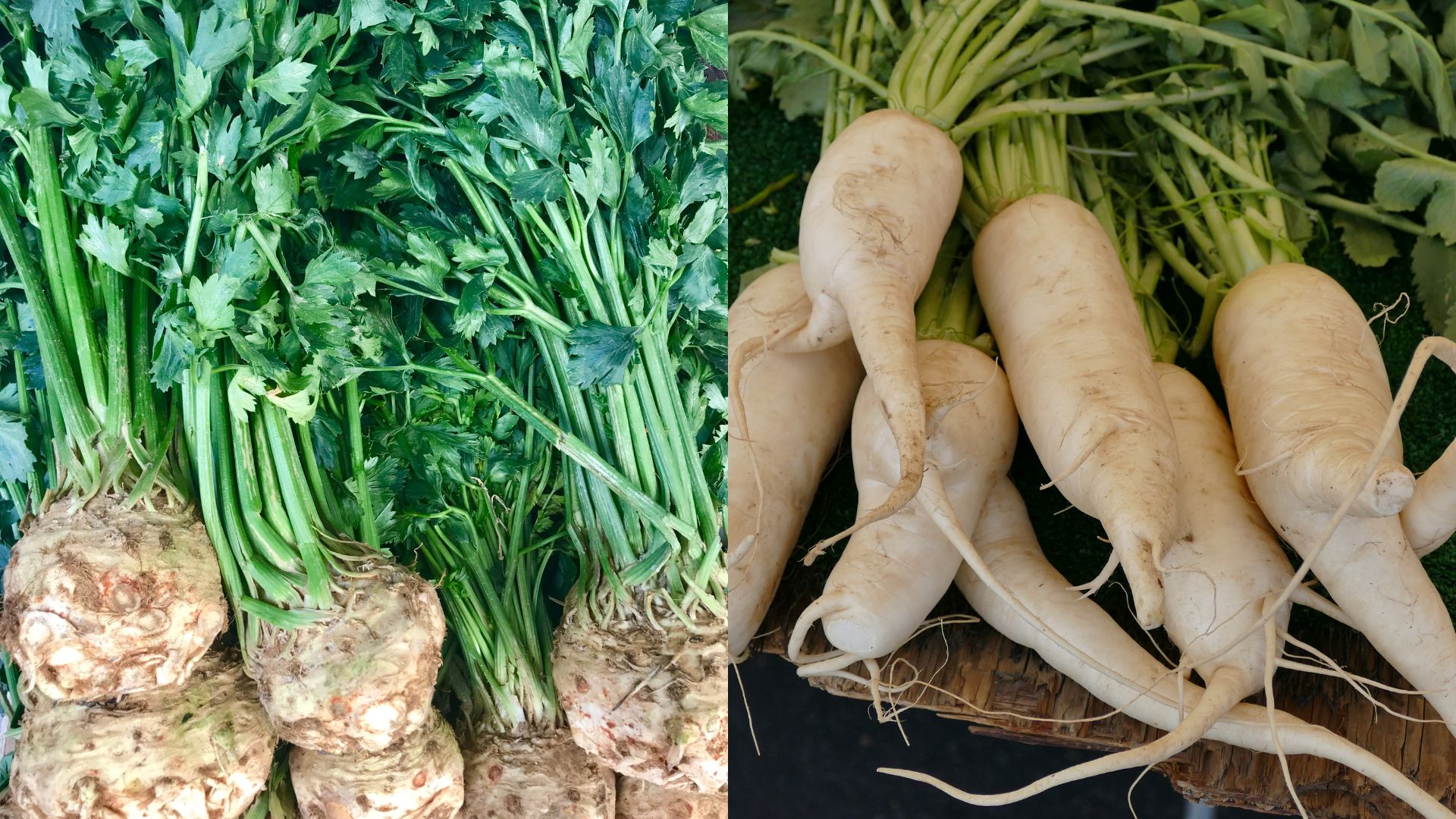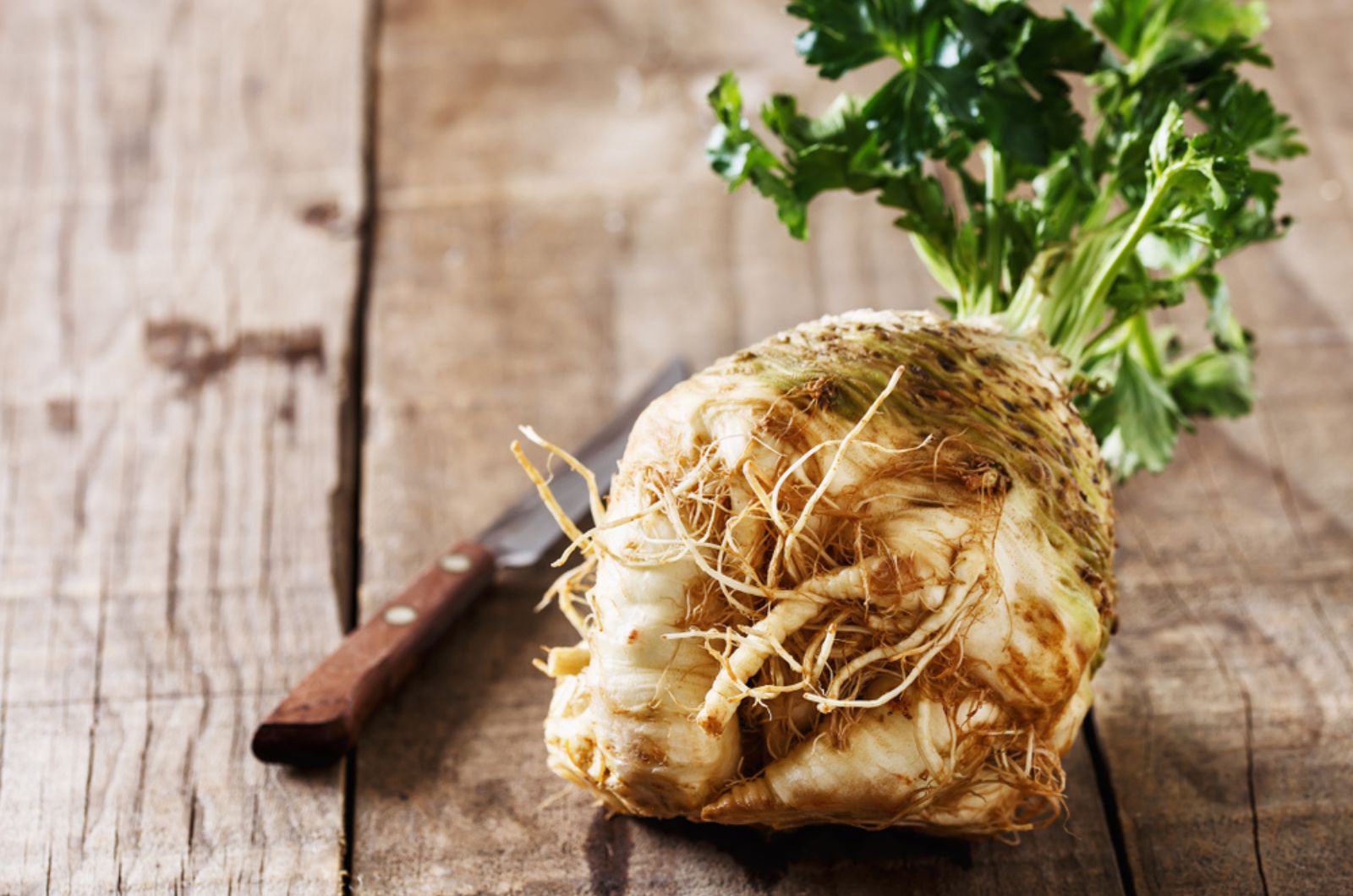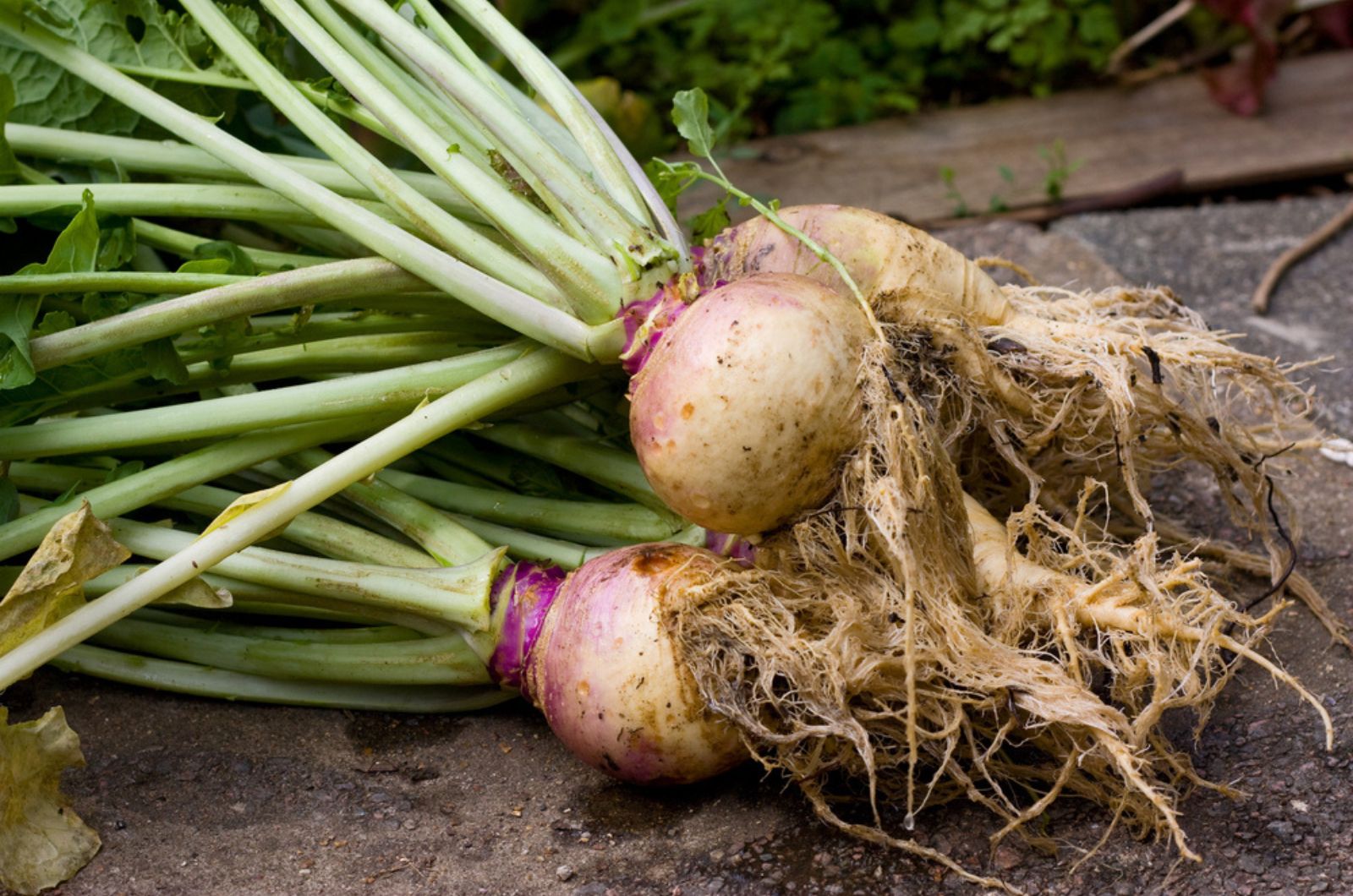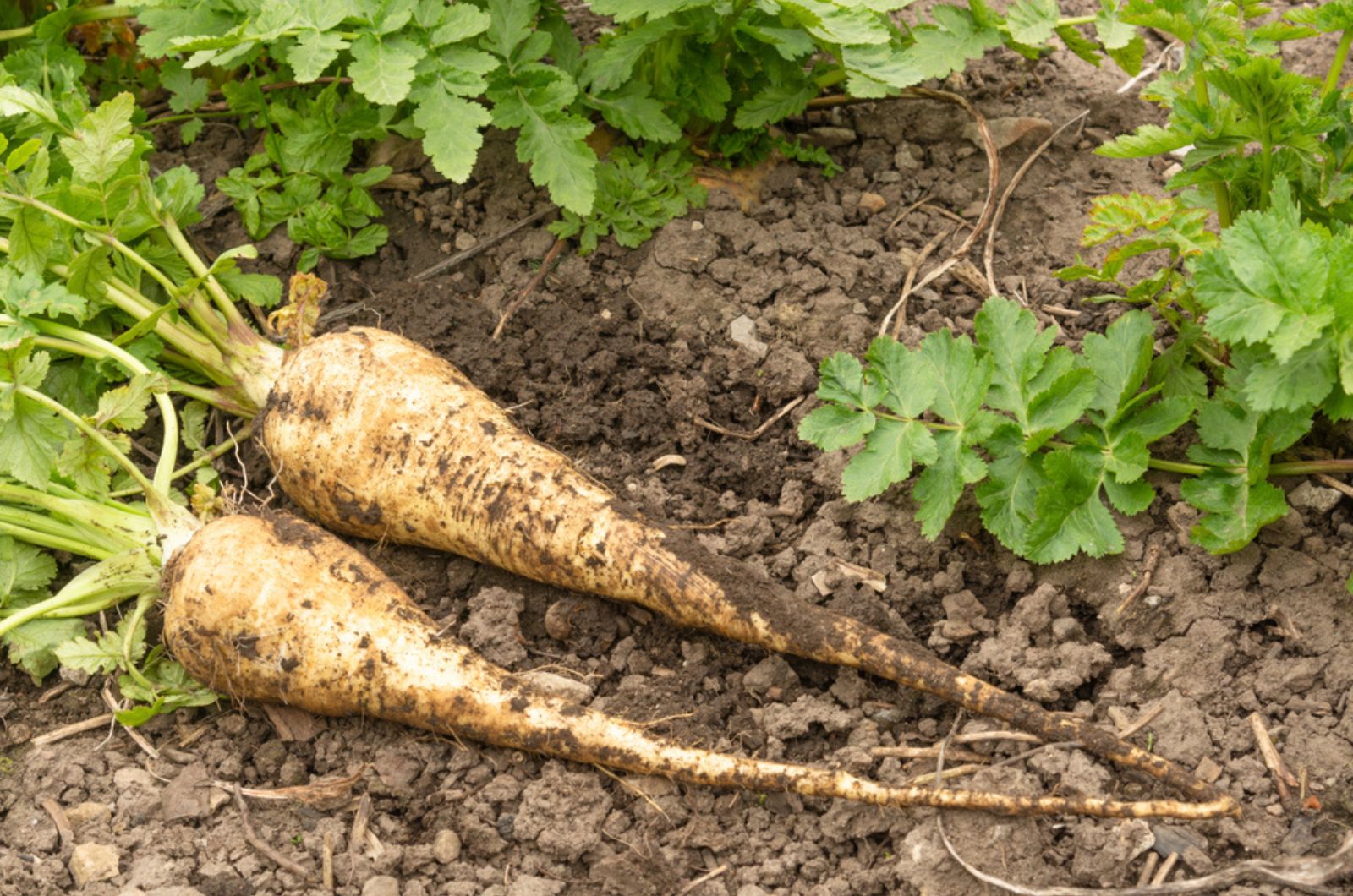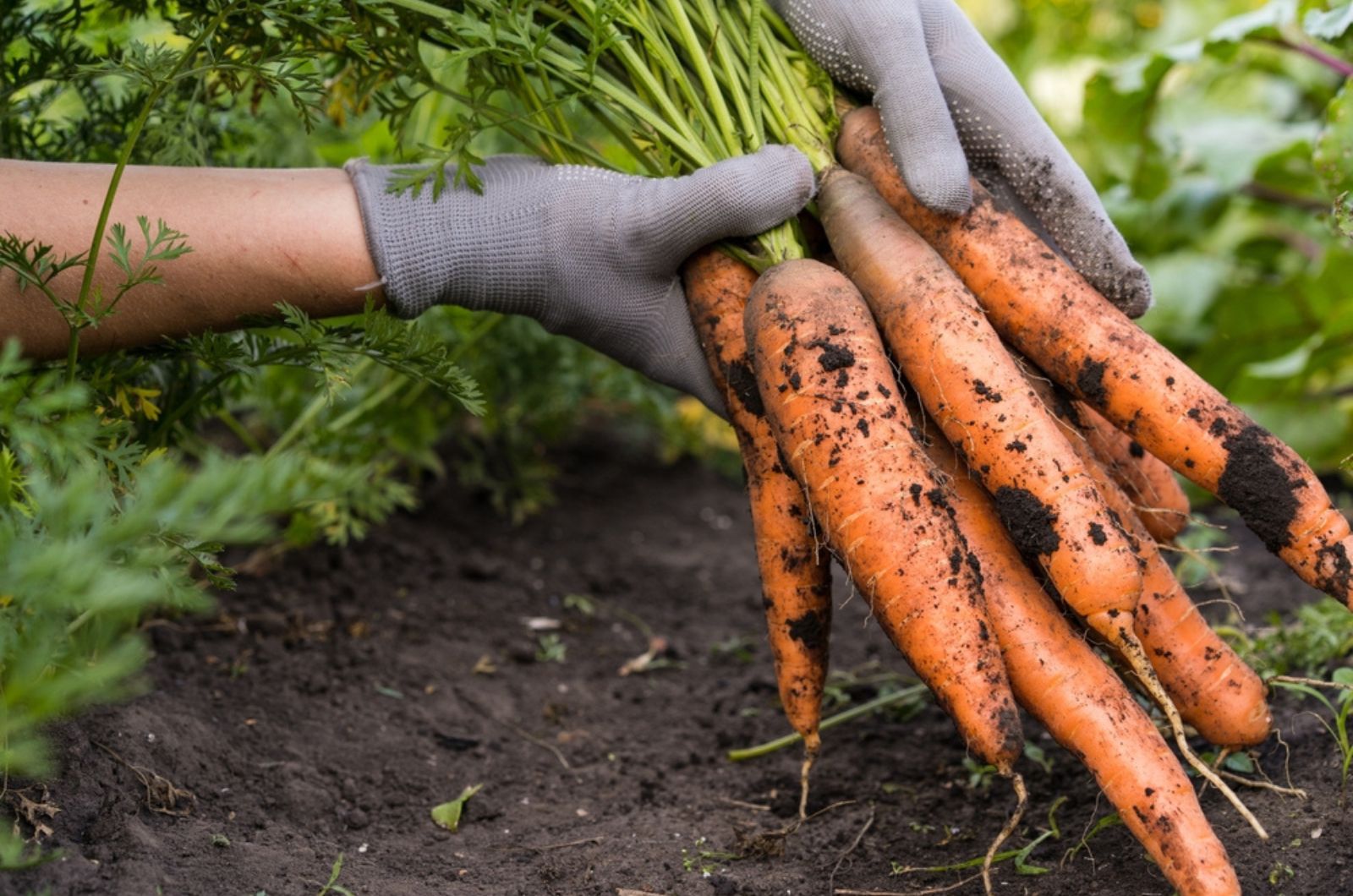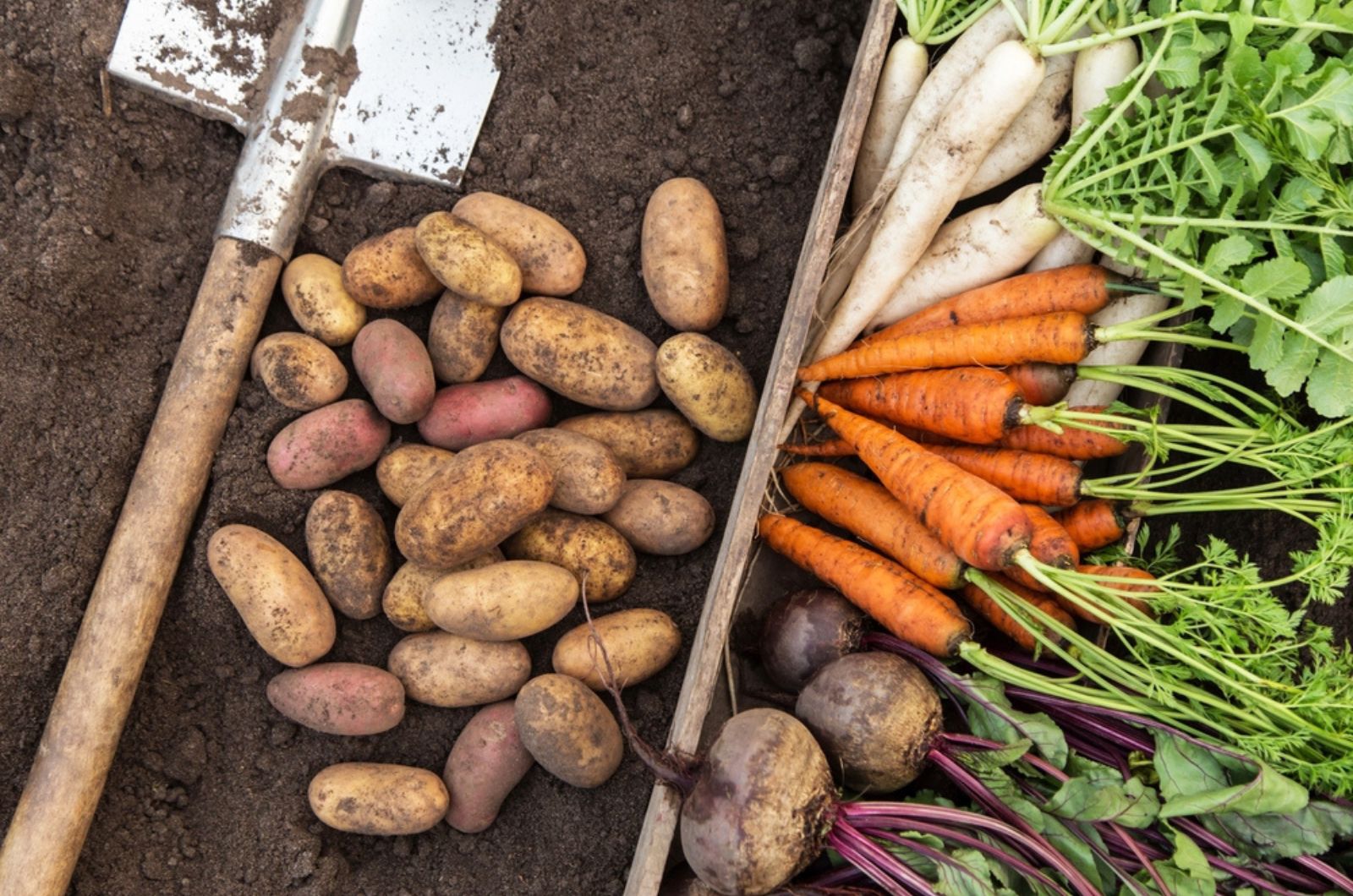From garden to plate, these root vegetables are a superb choice to harvest before Christmas arrives. It’s always better to use fresh veggies to make delicious meals, especially around the holidays.
You may be harvesting your Christmas vegetables in December or even later with just a little advance planning!
In this article, we are going to share some tips on how to plant and grow veggies that are ready for harvesting during the holiday season.
So, sit tight and keep reading!
1. Celeriac
Improve your winter stews with celeriac, a knobbly vegetable that mixes perfectly with garlic. Often used in meals and salads, celeriac is a popular root veggie that grows best in USDA zones 2 through 10.
What’s also great is that you can leave it in the ground through winter and up until spring. This essentially means that you can dig it up whenever you need it, and your celeriac will be firm and fresh!
How To Plant Celeriac
Since a celeriac takes about six months to mature, you should plant it in March or April. Then, young seedlings should be transplanted outside during May or June.
Give your celeriac plenty of direct sunlight and rich, well-draining soil. Make sure to water it frequently and prevent the soil from drying out entirely. Cover them with straw or bracken to protect them from freezing temperatures.
Related: A List Of 25 Delicious Vegetables Grown Under The Ground
2. Swede
Swede, also known as rutabaga, is a cool-season veggie that can be harvested just as the Christmas season approaches!
Mashed swedes and carrots combined with black pepper and butter create the perfect meal, offering a delicious mix of flavors that will leave your taste buds delighted. Plus, you can prepare the meal and freeze it before the holidays.
How To Plant Swede
Plant Swedes in nutrient-rich soil during May or June. Sow them about half an inch deep and thin the seedlings to about 8 inches apart. Water well and wait patiently because swede is a slow-growing plant.
They should take about 6 months to mature and you can harvest them in September. However, you can keep them in the ground until the New Year, just make sure that they are covered with straw.
3. Parsnips
There’s always a place in the garden for delicious parsnips. These are also root veggies that can be left in the ground until you need them. Parsnips and carrots are not good companions so avoid growing them together.
How To Plant Parsnips
First, make holes and put three seeds in each of them, making sure that they are about an inch deep. Space holes around 6 inches apart. The best time to plant parsnips would be from March to May.
Thin out the seedlings and get rid of weeds. Water thoroughly, especially when the parsnips are still young. Surprisingly, parsnips’ taste is greatly improved when exposed to frost, which is why most gardeners lift them in December with a garden fork.
4. Carrots
Everybody loves carrots!
They are a staple ingredient in many soups, salads, and stews. They are easy to grow and maintain, and the longer you leave them in the ground, the bigger the roots get.
Carrots are mostly harvested in November, but you can leave them until Christmas as long as you protect the ground from freezing. Use straw, mulch, or any other type of frost protection.
How To Plant Carrots
Plant carrots in light soil that drains well. Stone-free soil will ensure that there are no carrots with weird shapes. If you want to harvest them in the winter, sow carrots directly in the ground during summer.
Make sure that they receive full sunlight and some watering. Don’t disturb the leaves when you are thinning the seedlings because they can attract carrot flies, the most frequent pest that feeds on carrots. You can cover them with a horticultural fleece for extra protection.
If you are into hydroponics, here’s how to grow and care for hydroponic carrots.
5. Other
Other winter staples include potatoes and beetroot. Potatoes should be harvested earlier and stored in cold and dry environments. Nonetheless, they will taste just as good during the holidays!
Although some gardeners tend to leave beetroots up until December, they can easily get frost damage. Cover them with straw or cardboard to protect beetroots from frost.
Find more materials here: 5 Essential Covers To Shield Your Outdoor Plants From Frost

